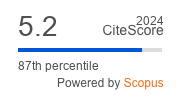Article | Open Access
Topic Diversity in Social Media Campaigning: A Study of the 2022 Australian Federal Election
| Views: | 3965 | | | Downloads: | 2329 |
Abstract: This study explores the diversity of topics in political campaign communication on social media during the 2022 Australian federal election. While political campaigns on social media are often associated with both persuasive and mobilising appeals, this research focuses on understanding the differences in persuasive content by comparing organic (non-targeted) and paid (targeted) political communication. Analysing the Australian context, which follows a Westminster system, with compulsory voting, we utilise data from the federal election 2022 to investigate how political actors employ persuasive communication strategies. Through topic modelling, we examine whether distinct themes vary in content and prevalence between organic and paid social media content disseminated by political parties and candidates. Our analysis revealed that the differences in topic diversity between paid and organic content do not seem to be substantial, despite popular concerns about higher personalisation due to advertising targeting which could lead to information fragmentation of the electorate. Both types of content predominantly focus on core political topics, aligning with party ideologies and include overall campaign information (e.g., on election procedures). However, government critique emerges as a distinct topic in both organic and paid content signalling the usage of negative campaigning to weaken opposing parties. In conclusion, this study suggests that the strategic manipulation of the electorate through social media during the Australian federal election in 2022 was limited. Nonetheless, the prevalence of negative appeals towards the government and opposing parties raises questions about the potential impact on citizens’ trust in democracy and institutions.
Keywords: Australian federal election; persuasive communication; political advertising; social media campaigning; topic modelling
Supplementary Files:
Published:
© Hannah Decker, Daniel Angus, Axel Bruns, Ehsan Dehghan, Phoebe Matich, Jane Tan, Laura Vodden. This is an open access article distributed under the terms of the Creative Commons Attribution 4.0 license (http://creativecommons.org/licenses/by/4.0), which permits any use, distribution, and reproduction of the work without further permission provided the original author(s) and source are credited.


